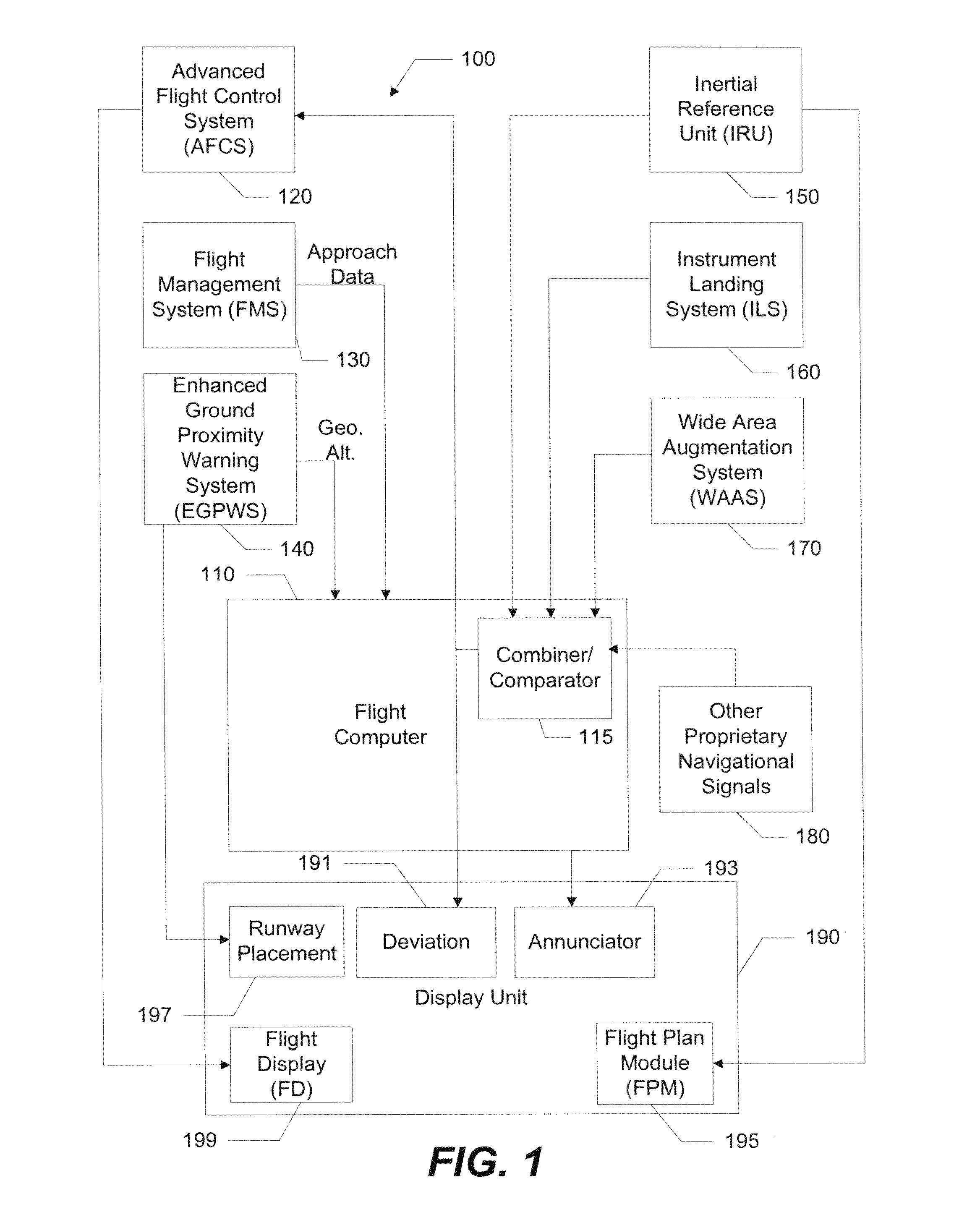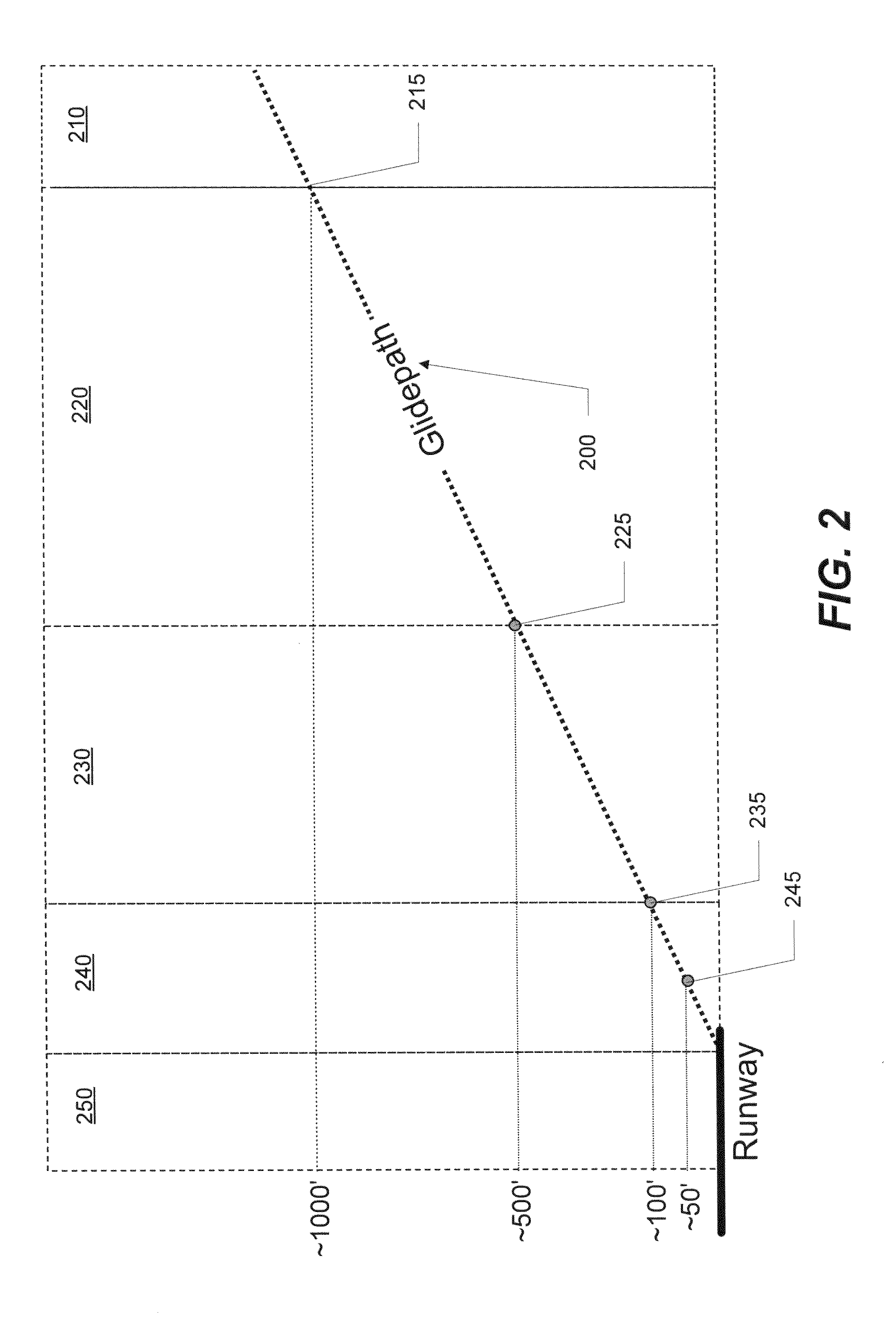Low visibility landing system
a low-visibility, landing system technology, applied in the direction of process and machine control, vehicle position/course/altitude control, instruments, etc., to achieve the effect of greater accuracy
- Summary
- Abstract
- Description
- Claims
- Application Information
AI Technical Summary
Benefits of technology
Problems solved by technology
Method used
Image
Examples
Embodiment Construction
[0025]CAT I, CAT II, and CAT III landing approaches use high precision landing systems that may employ different ground, satellite, and aircraft based equipment to aid in landing the aircraft. In at least one embodiment of the invention, a low visibility landing system may be configured such that aircraft landing approaches may proceed to lower altitudes for a decision height (DH) and to a closer distance for before the runway visual range (RVR). In some cases, embodiments of the present invention may utilize equipment configured for CAT I landings and use the equipment to execute a landing procedure with lower DH and RVR than would be possible under conventional CAT I landing procedures.
[0026]In one embodiment of the invention, a low visibility landing system may be configured to generate a hybrid signal from the separate signals of two landing systems. For example, the landing system may use the signals from an Instrument Landing System (ILS) and a Wide Area Augmentation System (W...
PUM
 Login to View More
Login to View More Abstract
Description
Claims
Application Information
 Login to View More
Login to View More - R&D
- Intellectual Property
- Life Sciences
- Materials
- Tech Scout
- Unparalleled Data Quality
- Higher Quality Content
- 60% Fewer Hallucinations
Browse by: Latest US Patents, China's latest patents, Technical Efficacy Thesaurus, Application Domain, Technology Topic, Popular Technical Reports.
© 2025 PatSnap. All rights reserved.Legal|Privacy policy|Modern Slavery Act Transparency Statement|Sitemap|About US| Contact US: help@patsnap.com



